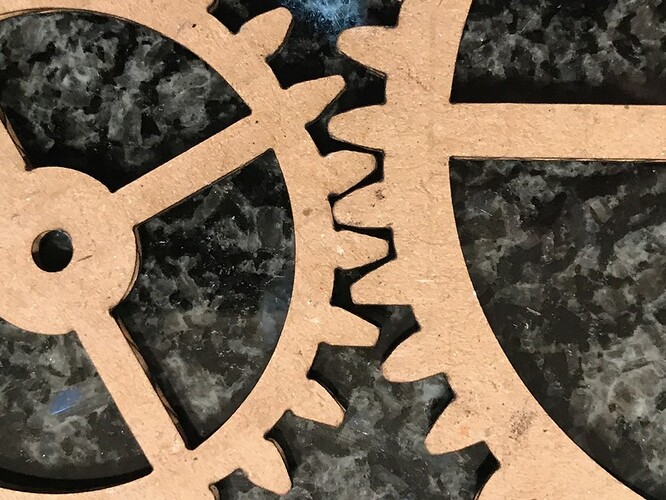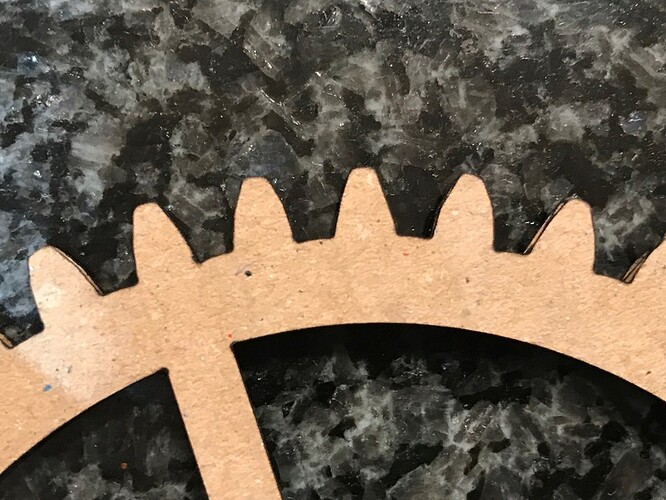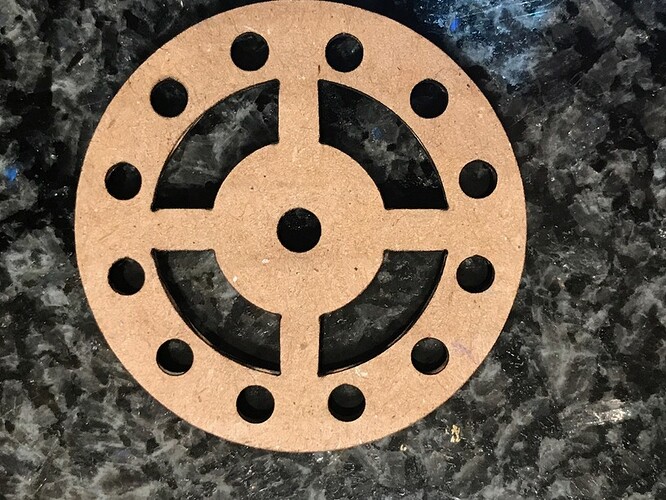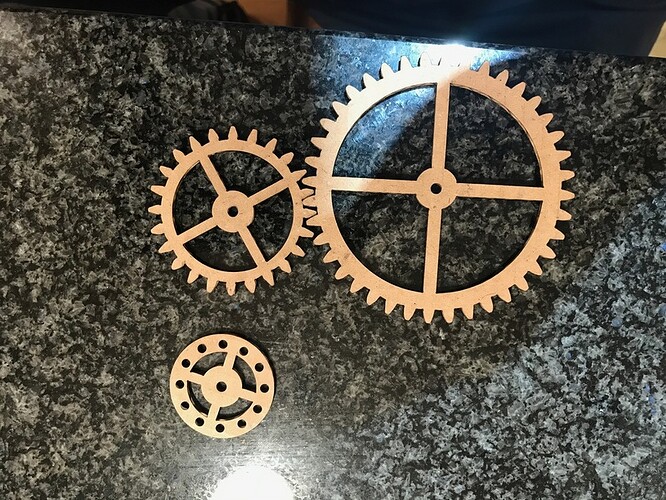Don’t waste your time with guilt, you earned your spot. Receive your unit and be prepared to help those less savvy down the road.
No one should feel bad – we will all get ours in the proper time, and I for one am overjoyed and really excited for those of you that are getting your letters. It is very cool, and it is really fun to see the joy bouncing all over the forum. 
No guilt! Just joy! we’ll all be with you soon enough!
Lemme just add that my warning is specifically to tight, high density cutting (ie living hinges). I think cardboard is a fantastic medium. But like anything, you need to know you limits and just pay attention to what happening in you cutter. I use cardboard regularly. i tend to opt out of living hinges and just bend the cardboard. 
So without ever having cut cardboard before, I guessed at settings (too lazy to search forums) and used 60%/50 for cut. Came out very nice (this is random parts of a parts box from my E3D printer.
Looks great, and you didn’t waste any PG material while trying it out. 
More than precision, cardboard may be useful to see if a product looks good once assembled as a preview.
Fantastic this is exactly what I was hoping to see. Thanks!
If there is a specific gear set or something you want me to cut as a test let me know. I don’t have a huge stock of cardboard, but I have a bunch of boxes…
Well on any other day I’d take you up on that but it’s “Units are rolling!” day I think I can make it a few more weeks. Thanks though!
Yay! Congrats, I’m really happy for you ![]()
Oh no, none of that mister!
I do just about everything in cardboard for a first run. 40/60 on settings for my PRU. First it gives me an idea of any oddball things I missed in prefllght for a file. I can understand @henryhbk needing it less because he does his stuff in OnShape and can see how it all fits together correctly, but me from an Inkscape deisgn have to double check everything for fit. You can also use cardboard for finished product if you skin it with something like kraft paper when you are done. For example, a box that has a couple coats of kraft all round it to make a block. It works well for testing out skeletal models. It makes great stencils. I made the signage for out booth and Maker Faire out of cardboard letters cut out and painted.
The pencil jig works great out of cardboard! I made a quick one today for pencils for @mspricethelibrarian.
No living hinges, no sir. They smolder and catch fire!
For something like that it makes total sense. Since most of my stuff is 3D (tab/slot) it makes less sense
Now for jigs it makes total sense as well since cheap and easy is the name of the game, unless it will be high volume in which case ply seems a better choice since it has less chance of creasing…
Better to waste a step than to waste materials, IMO. I learned that the hard way, by blowing through all of my PG plywood on a box design that I (foolishly) expected to be parametric. It was not ![]()
So now I’m hoarding cardboard for prototyping. Similarly, I intend to test some of my more detailed leather patterns using split leather first.
Recently did a house move and kept ALL the cardboard from the boxes we use to use with the GF.
did you order in the first few days?
@henryhbk No need to worry about material thickness if you use a parametric design tool like Fusion360. The thickness, say 5mm, isn’t set in the design. You just say every tab / slot / etc to thickness x (or say 10x), and then set x to whatever material you are cutting.
Not to be unkind but you must be new. Henry is pretty much the expert around here in parametric design.
Yes, the material thickness is a parameter of my parametric designs. OnShape’s laser joint generator isn’t quite as robust as Fusion’s as it’s an add-in rather than native, although it’s pretty good, but I prefer OnShape for the rest of my designs.
But that’s not valid for fit testing of an actual cut. CAD and CAM are never perfect handoffs, sometimes you actually have to cut the real stuff,




